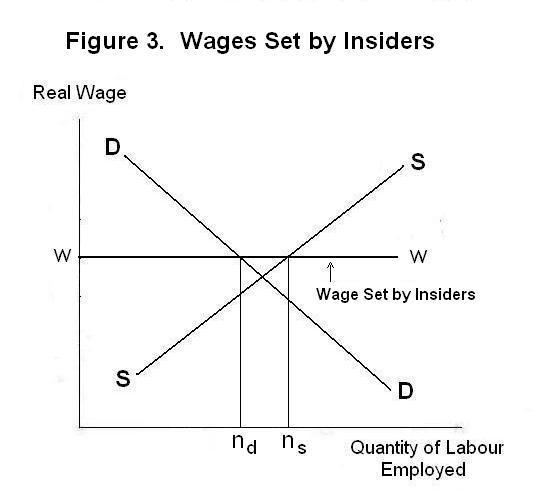 | ||
In labor economics, the insider-outsider theory examines the behavior of economic agents in markets where some participants have more privileged positions than others. The theory was developed by Assar Lindbeck and Dennis Snower in a series of beginning in 1984.
The insiders are those incumbent workers who enjoy more favorable employment opportunities than the outsiders. The reason for this disparity is that firms incur labor turnover costs when they replace insiders with outsiders. Examples of labor turnover costs are the costs of hiring, firing and providing firm-specific training. Insiders may resist competition with outsiders by refusing to cooperate with or harassing outsiders who try to underbid the wages of incumbent workers.
The implications of this behavior for employment and unemployment is that there is absence of wage underbidding even when many unemployed workers are willing to work for wages lower than existing insider wages (normalized for productivity differences).
Permanently higher unemployment
When some external shock reduces employment, so that some insiders become outsiders, the number of insiders decreases. This incentivizes the insiders to set even higher wages when the economy again gets better, as there are not as many insiders remaining as before, instead of letting the outsiders to again get jobs at earlier wages. This causes hysteresis, i.e., the unemployment becomes permanently higher after negative shocks.
